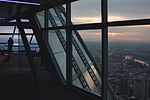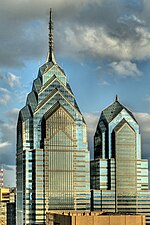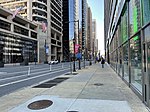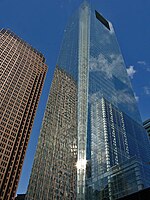Five Penn Center

Five Penn Center is a 36-story highrise in Center City Philadelphia. It is part of the Penn Center complex designed by Edmund Bacon. The building was one of the tallest in the city until the high rise building boom of the late 1980s and early 1990s and is connected via underground concourse to Suburban Station, as are all buildings in the complex. It was designed by Emery Roth & Sons and Vincent G. Kling (who also designed the Philadelphia Mint).In 1986, several buildings of the Penn Center complex were renamed to their street addresses and Five Penn was no exception. Looking to get an edge up, being the largest of the Penn Center buildings and directly across Market Street from One Liberty Place, which was rising at the time, building landlords offered rental space at $16.01 a year per square foot, a marketing ploy for the building based on its address, 1601. Today, major tenants include The Neat Company, KPMG and WeWork. The building's lobby underwent remodeling in the summer of 2006.
Excerpt from the Wikipedia article Five Penn Center (License: CC BY-SA 3.0, Authors, Images).Five Penn Center
Market Street, Philadelphia Center City
Geographical coordinates (GPS) Address External links Nearby Places Show on map
Geographical coordinates (GPS)
| Latitude | Longitude |
|---|---|
| N 39.9531 ° | E -75.1674 ° |
Address
Five Penn Center
Market Street 1601
19103 Philadelphia, Center City
Pennsylvania, United States
Open on Google Maps









